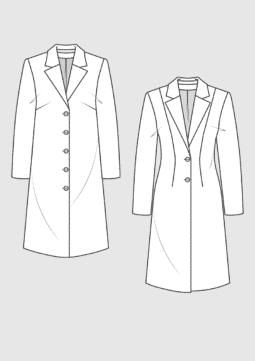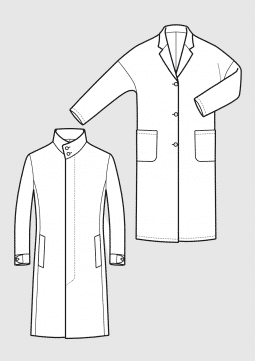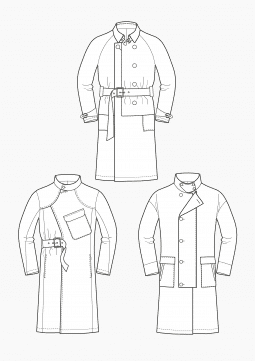Jersey Coats for Men
Deutsch

Lightweight, unlined slim-fit coats in Jersey or other stretch material are ideal for the transitional season or cooler summer days. For a casual look, combine these styles with a T-Shirt or a Denim jacket, or use more elegant fabric for a lightweight car coat worn over a suit. Very trendy are also oversized designs with wide dropped shoulders.
This article is an extract of our magazine Rundschau for men 3.2017, it gives an insight of the pattern construction showing one of the four models.
Variant 1 – Asymmetric Short Coat (Modell 5032)
Template: Basic Jacket Block, HR 11/2014, page 24
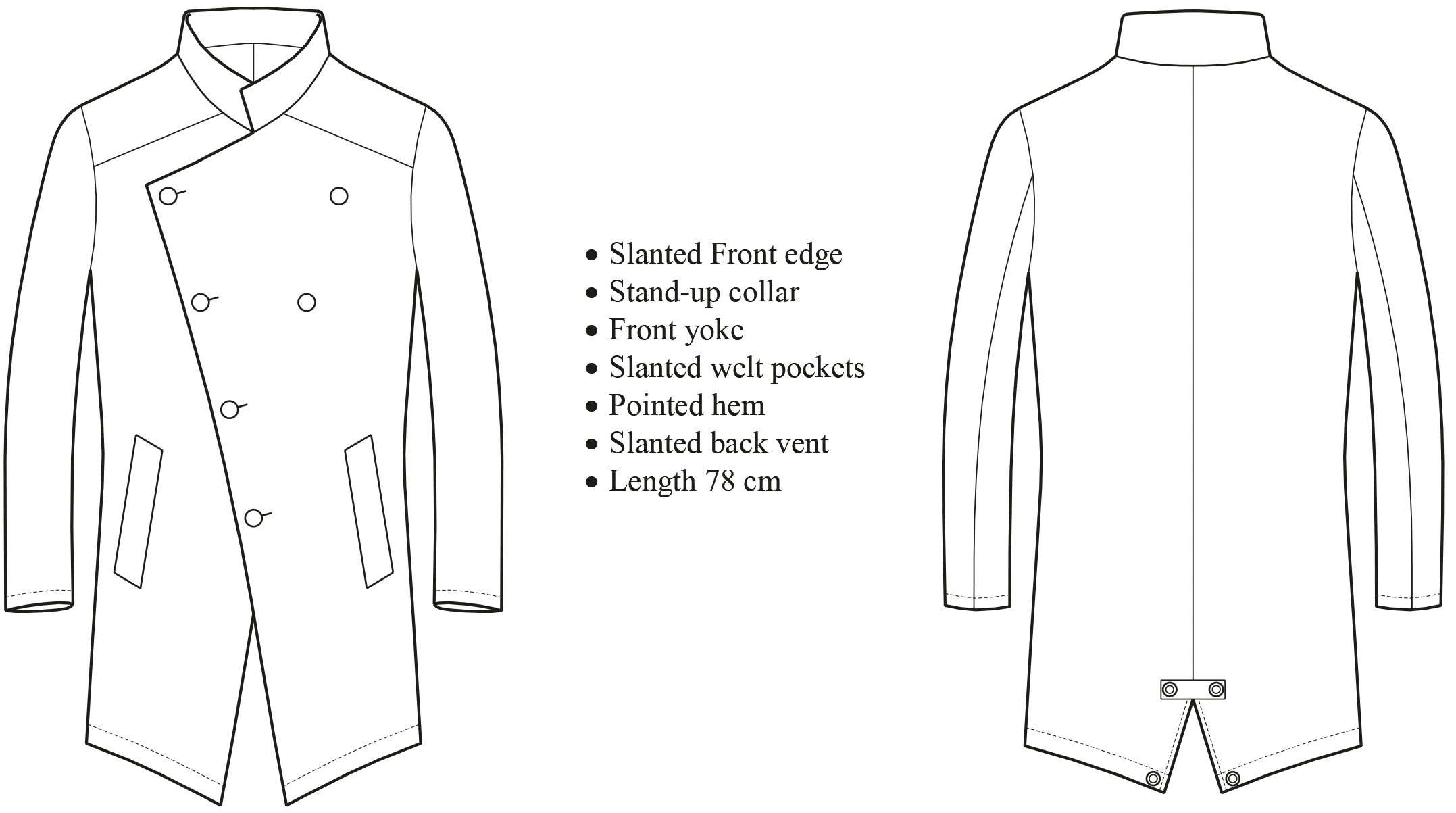
Design Pattern and Collar
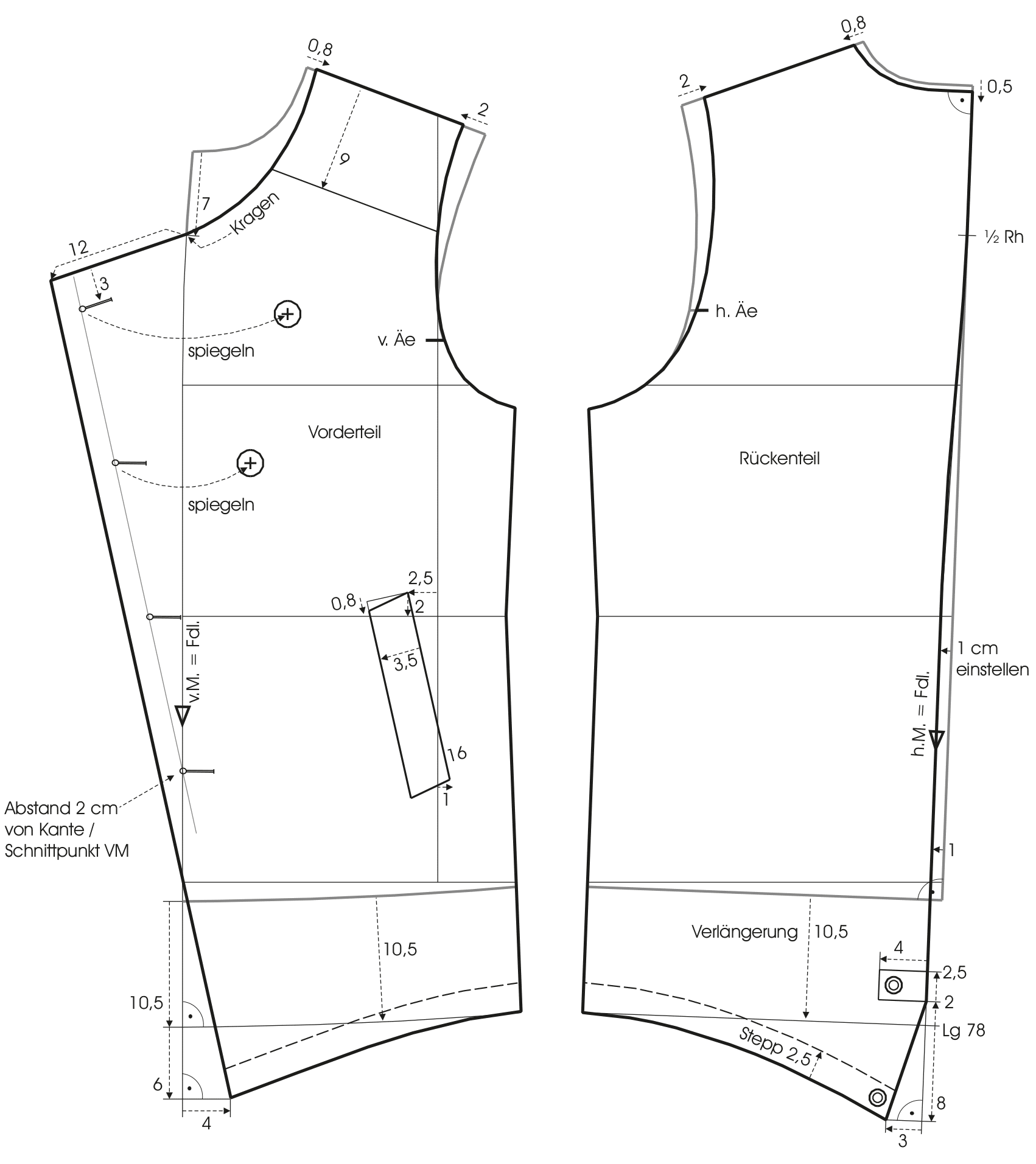
Lower the neckline 0.5 cm at the centre back and 0.8 cm at the shoulder. Draw the new neckline on the back pattern and mark the lowered shoulder point on the front pattern. Lower the neckline 7 cm at the centre front and draw the front neckline slightly rounded. Lengthen the pattern 10.5 cm for a finished length of 78 cm. Draw the centre back tapered for a finish with seamline instead of fabric fold. Taper the centre back 1 cm at the waist and draw a parallel line to the hem. Draw the upper part of the centre back slightly shaped to the ½-scye depth point. Lengthen the centre front and centre back as shown for the pointed hem. Taper the hem at the centre front and centre back and draw the pointed hem slightly rounded to the sideseam as shown in the illustration.
Mark the tab at the top of the back vent. Mark the position of the snap buttons. The hem can be buttoned upwards with the snap button counterparts on the hem corner. Mark the hem stitching line 2.5 cm wide. Extend the front neckline 12 cm for the slanted overlap and draw the front edge as shown.Mark the buttonholes 2 cm away from the front edge. Mark the bottom button at the intersection with the centre front. Mark the top buttonhole 3 cm below the lapel line and place two additional buttonholes evenly in between. Mirror the two upper button markings over the centre front for the decorative buttons. Mark the welt pocket as shown. Trim the shoulder 2 cm and draw the new armhole on the front and back pattern. Blend the seam transition at the shoulder. Draw the front yoke 9 cm parallel to the shoulder seam. Mark the grainline along the lower part of the centre front and centre back.
Collar
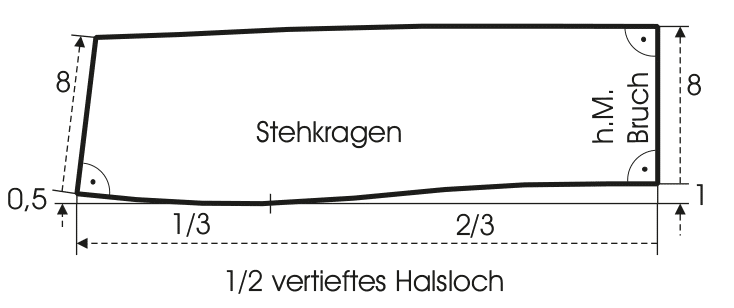
Draw the stand-up collar on a horizontal baseline. Measure the lowered front and back neckline and add both measurements. Measure the neckline length along the horizontal baseline to the left and square up 1 cm at the centre back and 0.5 cm at the front. Divide the baseline in thirds and draw the collar seam as shown in the illustration. Draw the collar 8 cm wide. Draw the collar shape as shown. Measure and compare the collar seam length and adjust parallel to the centre back if necessary.
Variant 2 – Coat with Stand-up Collar (Design 5030)
Template: Jacket Coat in Size 50, HR 2/2017, page 24
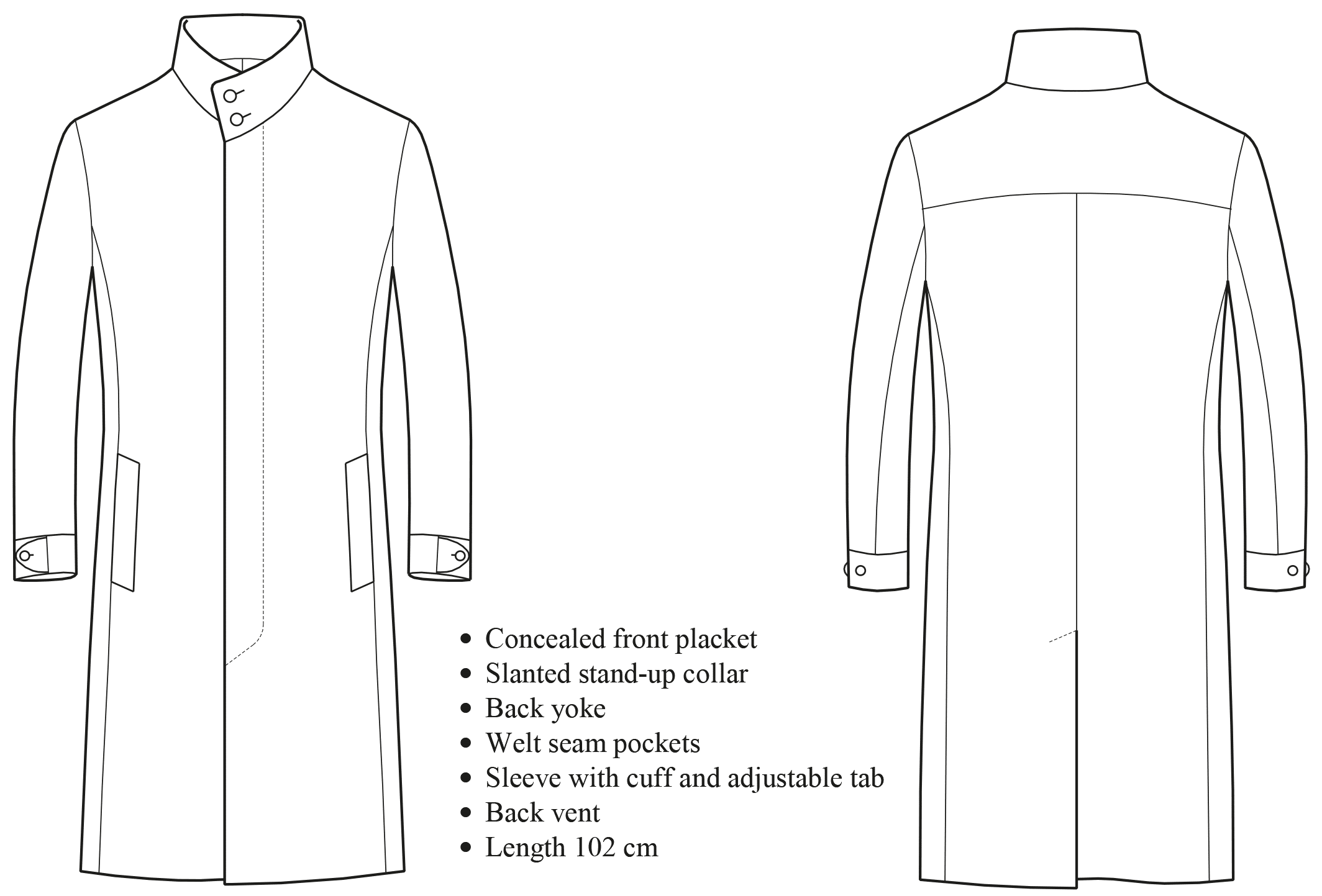
Variant 3 – Drop Shoulder Coat (Design 5031)
Template: Basic Block for Oversized Coat
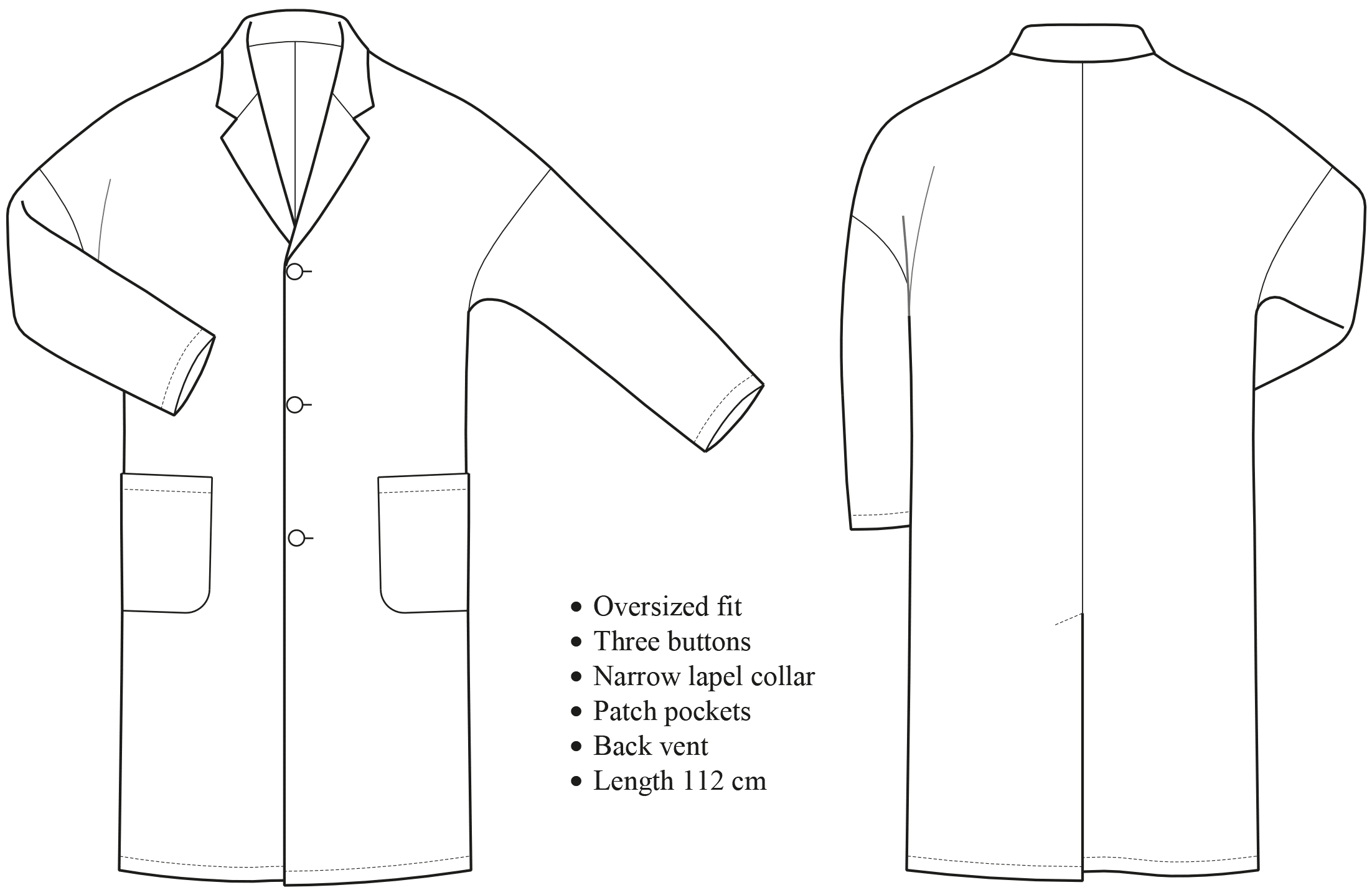
Order the patterns
You can order the patterns with the model number 5030, 5031, 5032 in following sizes:
Normal sizes (44 – 60), stocky sizes (23 – 31) and slim fit sizes (88 -114) Price for each size: 30 € (plus postage and package).
Sextl-Schnitt-Service, Hahndorfer Straße 6, 81377 München, e-mail: alexander.6tl@gmx.de, www.sextl-schnitt-service.de
Further instructions for pattern construction and patterns for sewing menswear can be found in our online shop.


